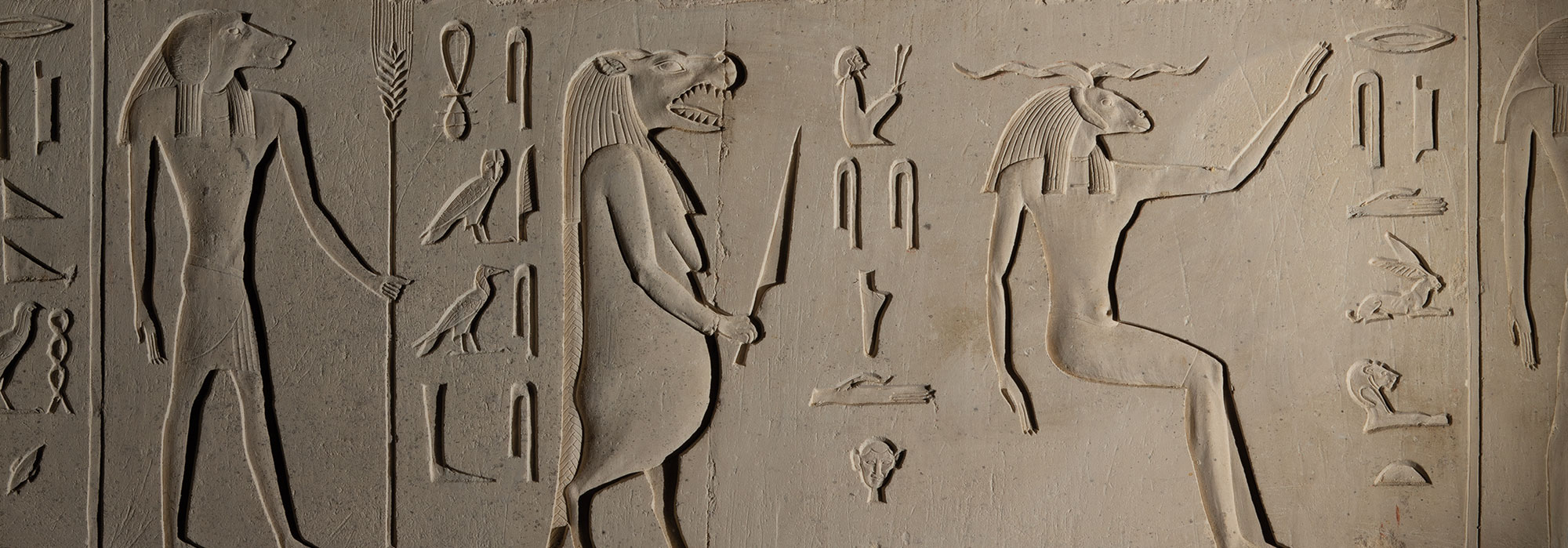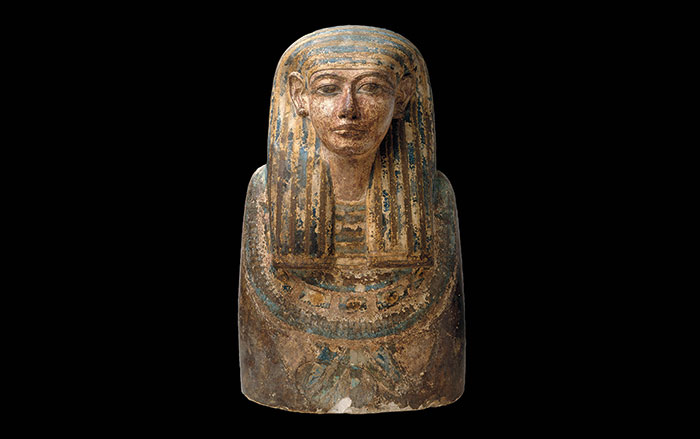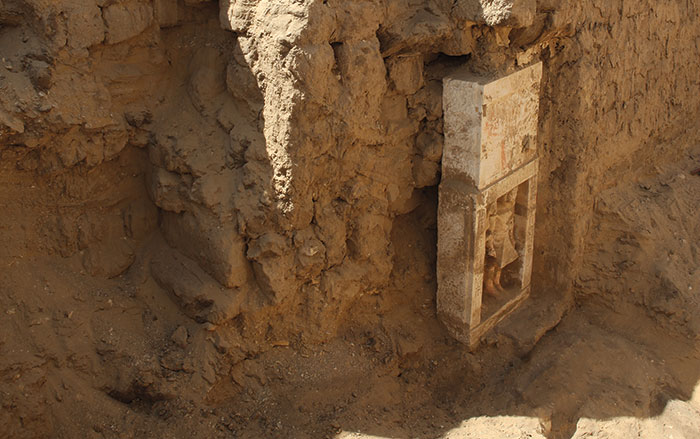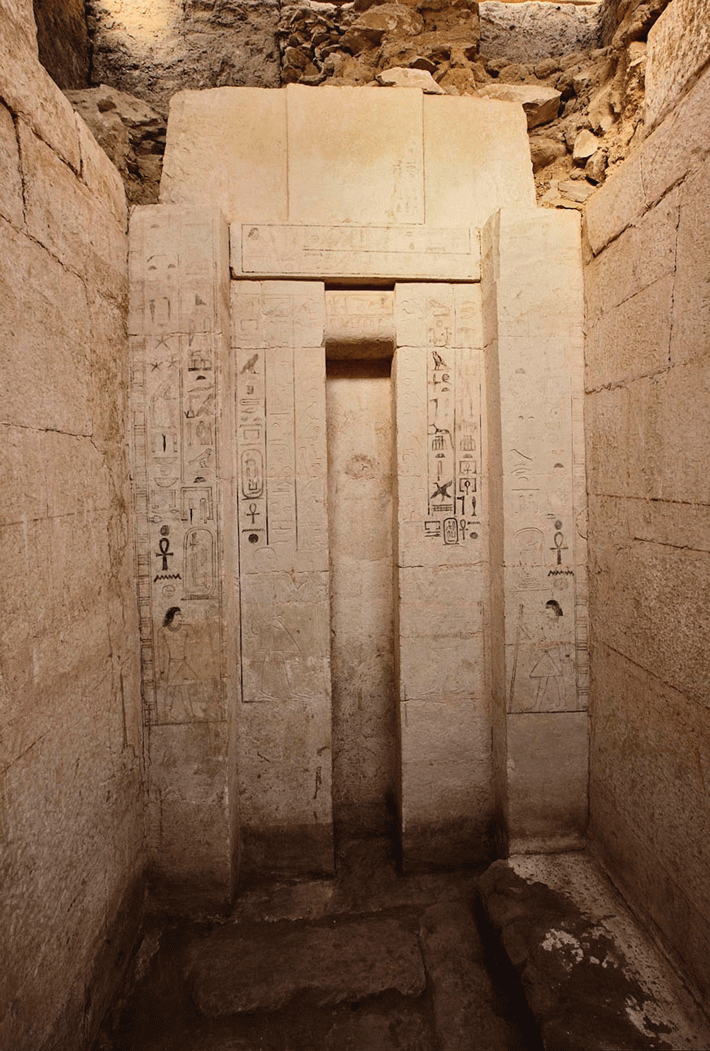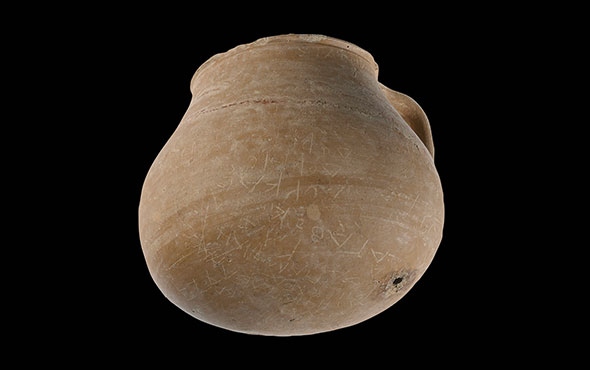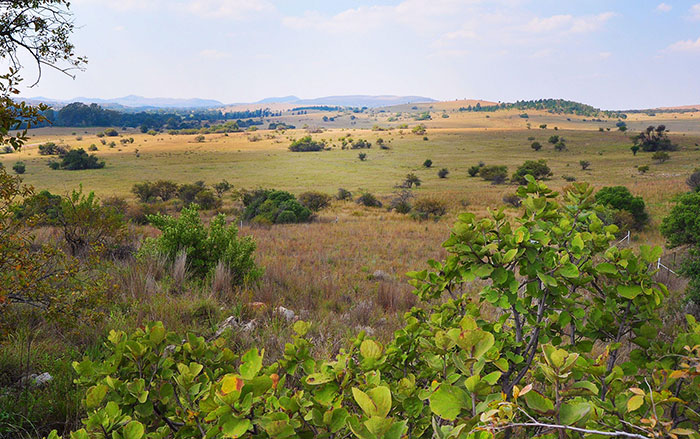
A set of rare depictions of demons guarding a gate was discovered at a Saite Period (688–525 B.C.) tomb at the necropolis of Abusir. Belonging to a general named Menekhibenekau, the tomb also contains an enormous sarcophagus that depicts guardian demons. These creatures are often shown on objects or in tomb decorations standing guard by gates to the afterlife, but images of them acting as physical guardians of a tomb are uncommon. Charles University Egyptologist Renata Landgrafova recently analyzed reliefs that decorate the passage entrance to Menekhibenekau’s tomb chamber. She has found that they depict six gates to the underworld, each guarded by three demons acting as a team watching over the portals that Menekhibenekau has to travel through as he makes his way to the afterlife.
Underworld gate guardians were probably also commonly understood as guardians of the tomb itself. “The fact that the demons are guarding metaphorical gates as well as an actual passage is significant,” says Landgrafova. “This is the only place we have them so obviously serving a dual function.” The demons depicted on the gate to Menekhibenekau’s tomb are the human-animal hybrids common in the Egyptian imagination. One gate is guarded by a turtle-headed demon named “eater of his own excrement,” a lion figure called “he with alert heart,” and a baboon demon known as “great one.” As Menekhibenekau journeyed to the underworld, he would have been required to show himself worthy to pass through these demons’ gates, even as they stood guard over his sarcophagus for eternity.


